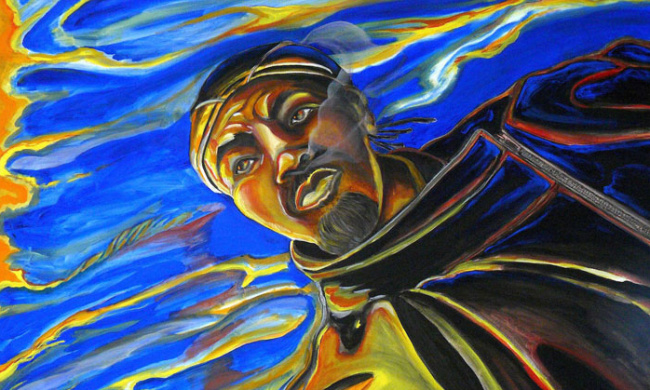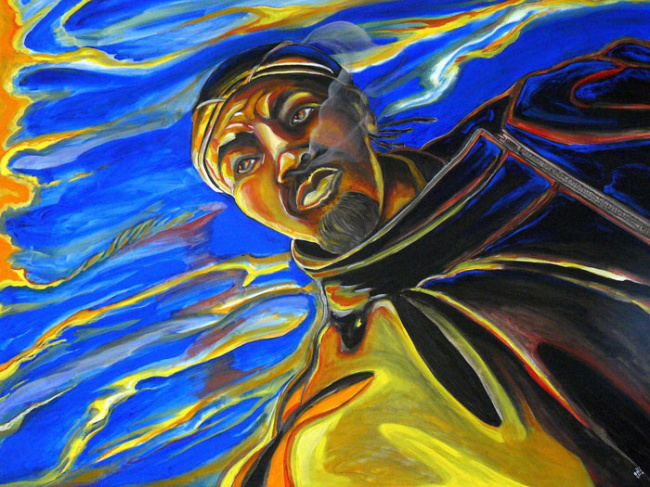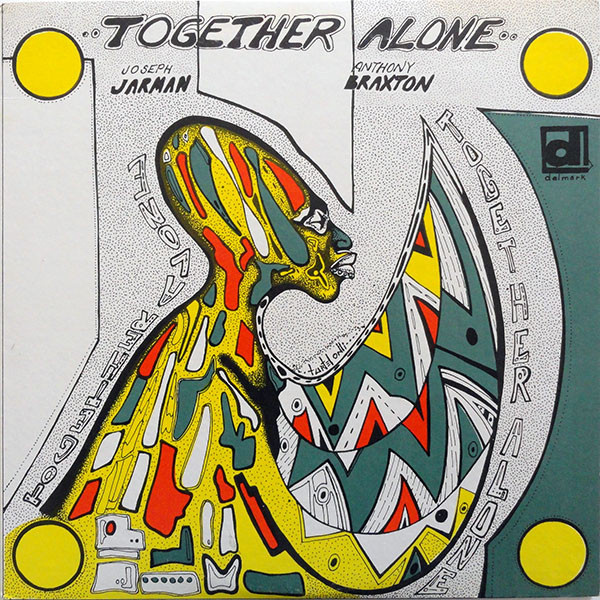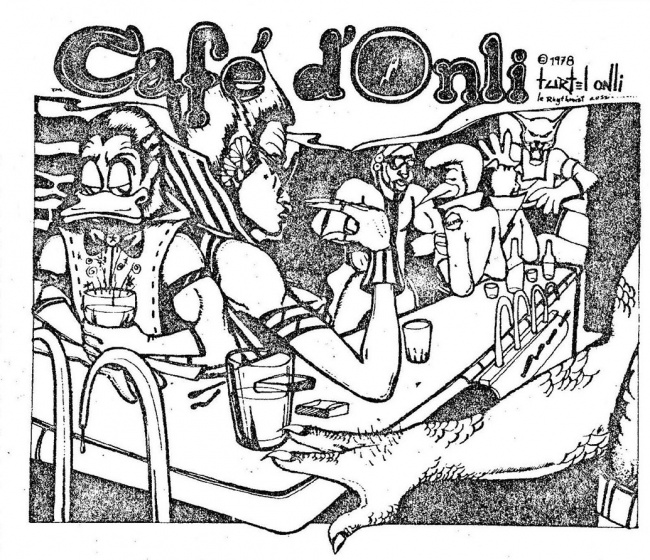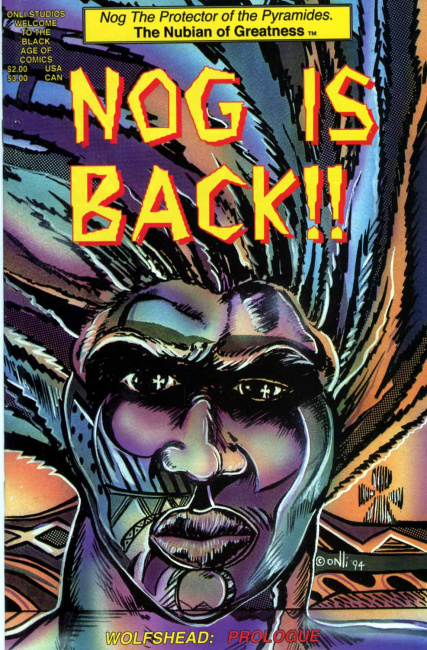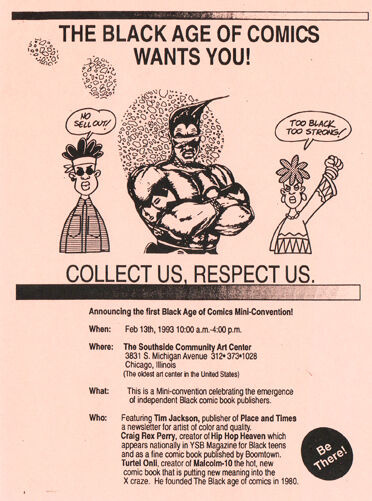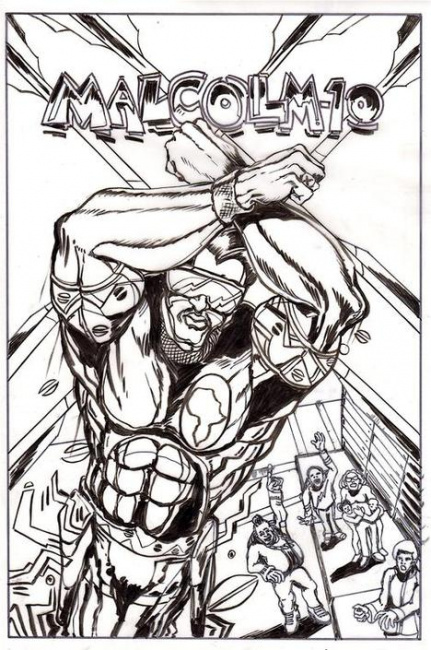Onli was born in Chicago in 1952 and grew up in the Hyde Park neighborhood. His grandfather, Rev. Samuel David Phillips, was a Pentecostal minister who did large paintings on oilcloths and windowshades to illustrate his sermons, and Onli, who occasionally helped out, later said that watching his grandfather inspired him to create his own narrative art in his own style.
In the 1970s and 1980s, Onli worked as a freelance artist for a range of clients that included Playboy, CNN, and local television station WGN, for which he was a sketch artist. He designed album covers for Joseph Jarman and Anthony Braxton's Together Alone and George Clinton’s You Shouldn't-Nuf Bit Fish, and he was supposed to design the cover for the Rolling Stones’ 1978 album Some Girls, but, as he told a Chicago Tribune writer in a 2024 interview, "They wanted something absolutely offensive. I gave it to them. Lawyers stepped in, wisely, to say 'You can’t show that.'" He also spent five years as an art therapist in the art center he founded at the Robert Taylor Homes in Chicago. He attended college while working, earning an associate’s degree from Olive-Harvey College and a BFA and a Master of Arts in Art Therapy from the School of the Art Institute of Chicago (SAIC). In the late 1970s he discovered Heavy Metal and its French counterpart, Metal Hurlant, and he traveled to Paris, where he studied at the Sorbonne, did illustrations for Paris Metro, and met the artist Moebius.
In 1970, when he was 18, Onli formed the Black Artists Guild (BAG), a group that published their own zines, including Onli’s Funk Book, and planned shows of their work. Part of the purpose of BAG was to prepare the members to be professional artists, and their mentor was textile artist Robert Earl Paige (who designed African-inspired fabrics for Sears and other clients). The artists earned money by renting their artwork to local colleges and universities and kept it in an account; members who were hard up for cash could request funds to pay for art supplies, books, or other necessities. The group officially disbanded in 1978. Onli’s involvement in BAG was the beginning of a life of organizing and promoting not only his work but that of his fellow artists.
In the late 1970s, Onli decided to become a freelance comics artist. He described his experience in an interview with the Chicago art history site Never the Same, "I won’t name names, but major people at major companies looked at me and said, 'do black people read?' … And then when I went back, they were ‘do black people know anything about science fiction?'" Onli’s response was to create his own superhero, NOG, Nubian of Greatness, who protected the pyramids on the planet Nuba, and pitch it to the publishers. In the interview, he related what happened next.
I go back to this company, and they offer me twenty-thousand dollars for all rights, and I have to sign contracts that say that I can never tell anybody I created it or I sold it to them. And I’m trying to negotiate and they’re like, “buddy, are you crazy? Do you know who we are?” So I went around the corner to their competition and they offered me a worse deal. It was then I decided, “don’t get mad, get organized,” so I launched the Black Age movement.
The Black Age of Comics was dedicated to publishing and promoting comics by Black creators for Black audiences, and over the years it would encompass Onli’s own work as a creator and publisher as well as comics conventions, exhibits, and more.
In 1993, Onli wrote an essay for Comics Buyer’s Guide critiquing the Black superheroes in mainstream comics. "Curiously, we have the culturally oblivious black characters like X-Men’s Bishop or Storm, who are long on presence but very short on cultural roots," he wrote. "Neither has nappy-kinky hair, brown eyes, or ‘negroid’ features. I guess the blacks in the 'X' universe have to be culture-neutral, powerful, exotic, and racially detached." That same year he organized the first Black Age of Comics convention in Chicago, with support from Milestone Studios, which was founded the same year, and co-founder Dwayne McDuffie. The event was a success and it was repeated in 1994 and 1995, as well as spawning similar conventions in other cities, including the annual East Coast Black Age of Comics Convention (ECBACC) in Philadelphia.
Onli continued to create comics, including Sustah-Girl and Grammar Patrol, both co-created with Cassandra Washington. In 2007 he launched Onli Studios, which published his The Origins of Team Blanga: Heroes of the Black Age (which came with a CD by Hardy Headz), Let’s Go Green in Da City, and Sasa.
During his long career, Onli taught art in the Chicago public schools, Columbia College, and Harold Washington College. He was a visiting artist in residence at the University of Illinois at Chicago from 1999 to 2010, and he worked with the Hyde Park Arts Alliance to curate and present the Black Arts Central exhibit, and he organized numerous other exhibits of work by Black artists. In 2005 he curated the exhibit Reverend Phillips and Turtel Onli: An Artistic and Spiritual Legacy, which juxtaposed his art with his grandfather’s religious paintings, at the Center for the Visual and Performing Arts in Munster, Indiana, and in 2021 he was included in the Chicago Comics: 1960s to Now show at Chicago’s Museum of Contemporary Art. His work was included in the anthologies Black Comix Returns, Slow Death Zero (see “Last Gasp Plans 50th Anniversary ‘Slow Death’”) and It’s Life as I See It: Black Cartoonists in Chicago, 1940-1980, which was published in conjunction with the MCA show.
In 2006, the Glyph Awards honored Onli with their Pioneer Lifetime Achievement Award.
News of Onli’s death brought tributes from Lance Tooks, Jerry Craft, Yummy Odom, Alex Simmons, and Afua Richardson, among others; David Walker called him "an inspiring and passionate artist that never seemed to waver in his support for indie comic creators." Onli’s family plans a retrospective exhibit of his work later this year.



